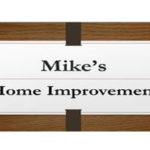An improvement loan is a type of home equity loan that allows you to borrow money to make improvements to your home. This can include repairs, renovations and extensions. If you’re looking for some extra cash to do work on your property, then this could be an option for you.
What are improvement rates?
Improvement loans are a great way to fund home improvements. They’re also known as second mortgages or home equity lines of credit (HELOCs), and they can be used for anything from repairing your roof to adding a bedroom onto your house.
In order for an improvement loan to be approved by a bank, you’ll need good credit and sufficient equity in your home–the amount of money that’s still owed on the property after subtracting any outstanding mortgages and liens against it. The lender will use this information along with other factors such as how much money is needed for repairs, how long it’ll take you to pay back the loan, and whether or not there are any financial red flags associated with taking out such an expensive loan like having trouble paying bills on time or having had previous foreclosure proceedings filed against them within 12 months prior
How do I get an improvement loan?
To get an improvement loan, you will need to apply for one. You may need to provide some documents and information about your property and finances. The lender will review your application, make a decision about whether or not to grant you an improvement loan, and send written notice of that decision (along with instructions on how much money they’ve approved).
What are the advantages of an improvement loan?
- The first advantage of an improvement loan is that it doesn’t require a credit check. This makes them ideal for people who may not have great or even good credit, but still want to borrow money at a lower interest rate than they would get with a home equity loan or mortgage refinance.
- You don’t need collateral with an improvement loan either. This means that if you default on your payments, the lender won’t be able to take anything from you outside of the property itself (they can’t repossess cars or other personal possessions).
- Interest rates are typically lower than those for home equity loans because there’s less risk involved in lending money against real estate–the collateral acts as insurance against defaulting on payments by making it difficult for lenders who hold mortgages over properties if borrowers fail to make their monthly payments on time.*
Should I apply for an improvement loan?
If you’re planning to make any improvements to your home, an improvement loan is a good option. Whether it’s a major renovation or just some minor updates like painting and flooring, an improvement loan can help you get the funds needed to complete these projects. You can use the money however you want–a general contractor may be able to give more specific advice about how best to spend it.
An improvement loan may be right for you if you need some work done to your home.
An improvement loan may be right for you if you need some work done to your home. Homeowners can use an improvement loan to pay for improvements, repairs and maintenance.
- Improvements are any changes that increase the value of a property, such as adding a new room or bathroom, replacing windows and doors, or installing an upgraded kitchen.
- Repairs are necessary fixes that keep things working well but don’t add additional value (like replacing broken pipes).
- Maintenance helps prevent problems before they start by keeping everything in good working order (like changing air filters regularly).
An improvement loan can be a great way to get the work done on your home that you’ve been wanting to do for years. It’s important to know all of the details about these loans before applying for one, but if you do, there’s no doubt in my mind that you’ll find them beneficial.











